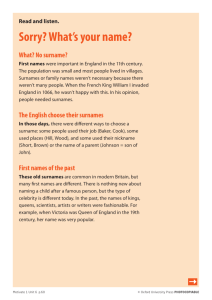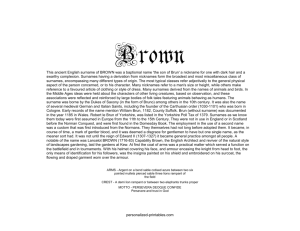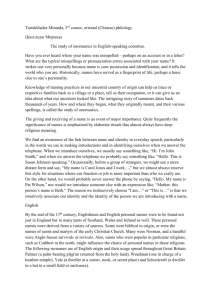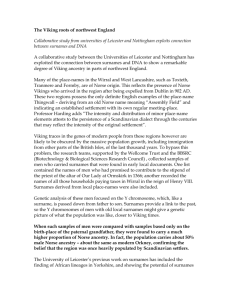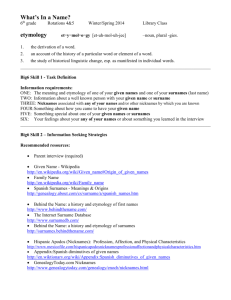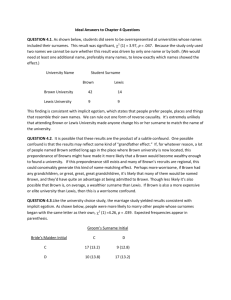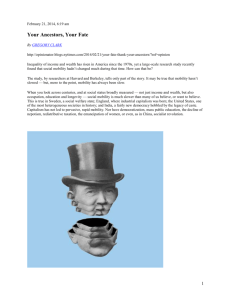How to Trace the Origin of Your Surname
advertisement
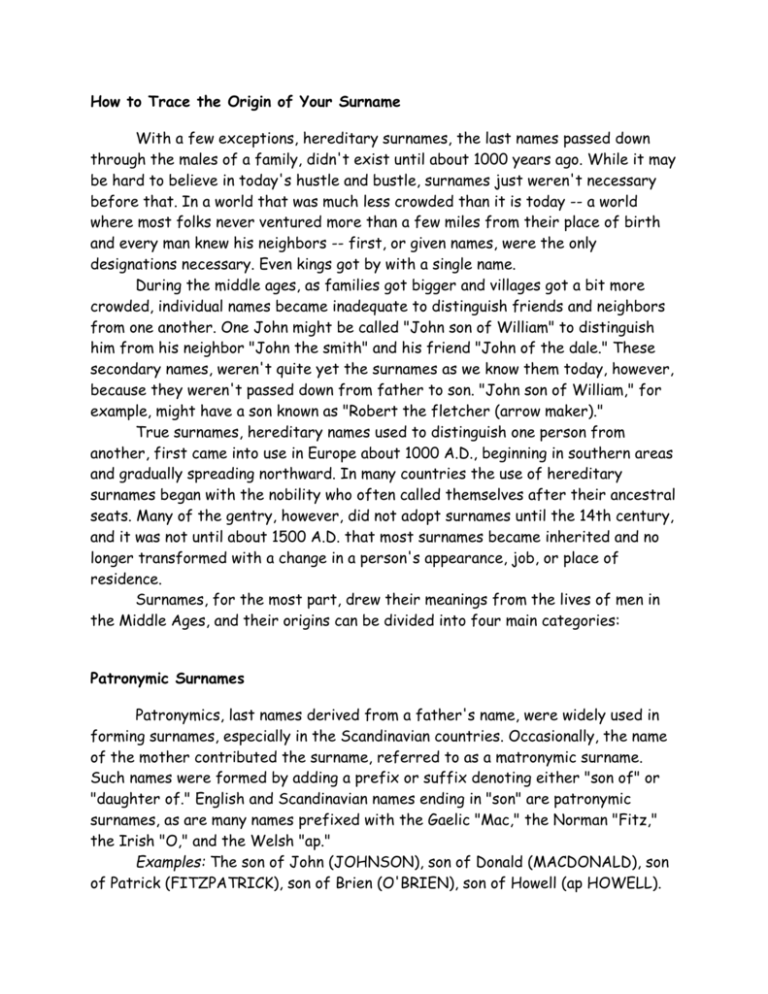
How to Trace the Origin of Your Surname With a few exceptions, hereditary surnames, the last names passed down through the males of a family, didn't exist until about 1000 years ago. While it may be hard to believe in today's hustle and bustle, surnames just weren't necessary before that. In a world that was much less crowded than it is today -- a world where most folks never ventured more than a few miles from their place of birth and every man knew his neighbors -- first, or given names, were the only designations necessary. Even kings got by with a single name. During the middle ages, as families got bigger and villages got a bit more crowded, individual names became inadequate to distinguish friends and neighbors from one another. One John might be called "John son of William" to distinguish him from his neighbor "John the smith" and his friend "John of the dale." These secondary names, weren't quite yet the surnames as we know them today, however, because they weren't passed down from father to son. "John son of William," for example, might have a son known as "Robert the fletcher (arrow maker)." True surnames, hereditary names used to distinguish one person from another, first came into use in Europe about 1000 A.D., beginning in southern areas and gradually spreading northward. In many countries the use of hereditary surnames began with the nobility who often called themselves after their ancestral seats. Many of the gentry, however, did not adopt surnames until the 14th century, and it was not until about 1500 A.D. that most surnames became inherited and no longer transformed with a change in a person's appearance, job, or place of residence. Surnames, for the most part, drew their meanings from the lives of men in the Middle Ages, and their origins can be divided into four main categories: Patronymic Surnames Patronymics, last names derived from a father's name, were widely used in forming surnames, especially in the Scandinavian countries. Occasionally, the name of the mother contributed the surname, referred to as a matronymic surname. Such names were formed by adding a prefix or suffix denoting either "son of" or "daughter of." English and Scandinavian names ending in "son" are patronymic surnames, as are many names prefixed with the Gaelic "Mac," the Norman "Fitz," the Irish "O," and the Welsh "ap." Examples: The son of John (JOHNSON), son of Donald (MACDONALD), son of Patrick (FITZPATRICK), son of Brien (O'BRIEN), son of Howell (ap HOWELL). Place Names or Local Names One of the most common ways to differentiate one man from his neighbor was to describe him terms of his geographic surroundings or location (similar to describing a friend as the "one who lives down the street"). Such local names denoted some of the earliest instances of surnames in France, and were quickly introduced into England by the Norman nobility who chose names based on the locations of their ancestral estates. If a person or family migrated from one place to another, they were often identified by the place they came from. If they lived near a stream, cliff, forest, hill, or other geographic feature, this might be used to describe them. Some last names can still be traced back to their exact place of origin, such as a particular city or county, while others have origins lost in obscurity (ATWOOD lived near a wood, but we don't know which one). Compass directions were another common geographic identification in the Middle Ages (EASTMAN, WESTWOOD). Most geographic-based surnames are easy to spot, though the evolution of language has made others less obvious, i.e. DUNLOP (muddy hill). Examples: BROOKS lived along a brook; CHURCHILL lived near a church on a hill; NEVILLE came from Neville-Seine-Maritime, France or Neuville (New Town), a common place name in France; PARRIS came from -- you guessed it -- Paris, France. Descriptive Names (Nicknames) Another class of surnames, those derived from a physical or other characteristic of first bearer, make up an estimated 10% of all surname or family names. These descriptive surnames are thought to have originally evolved as nicknames during the Middle Ages when men created nicknames or pet names for his neighbors and friends based on personality or physical appearance. Thus, Michael the strong became Michael STRONG and black-haired Peter became Peter BLACK. Sources for such nicknames included: an unusual size or shape of the body, bald heads, facial hair, physical deformities, distinctive facial features, skin or hair coloring, and even emotional disposition. Examples: BROADHEAD, a person with a large head; BAINES (bones), a thin man; GOODMAN, a generous individual; ARMSTRONG, strong in the arm

